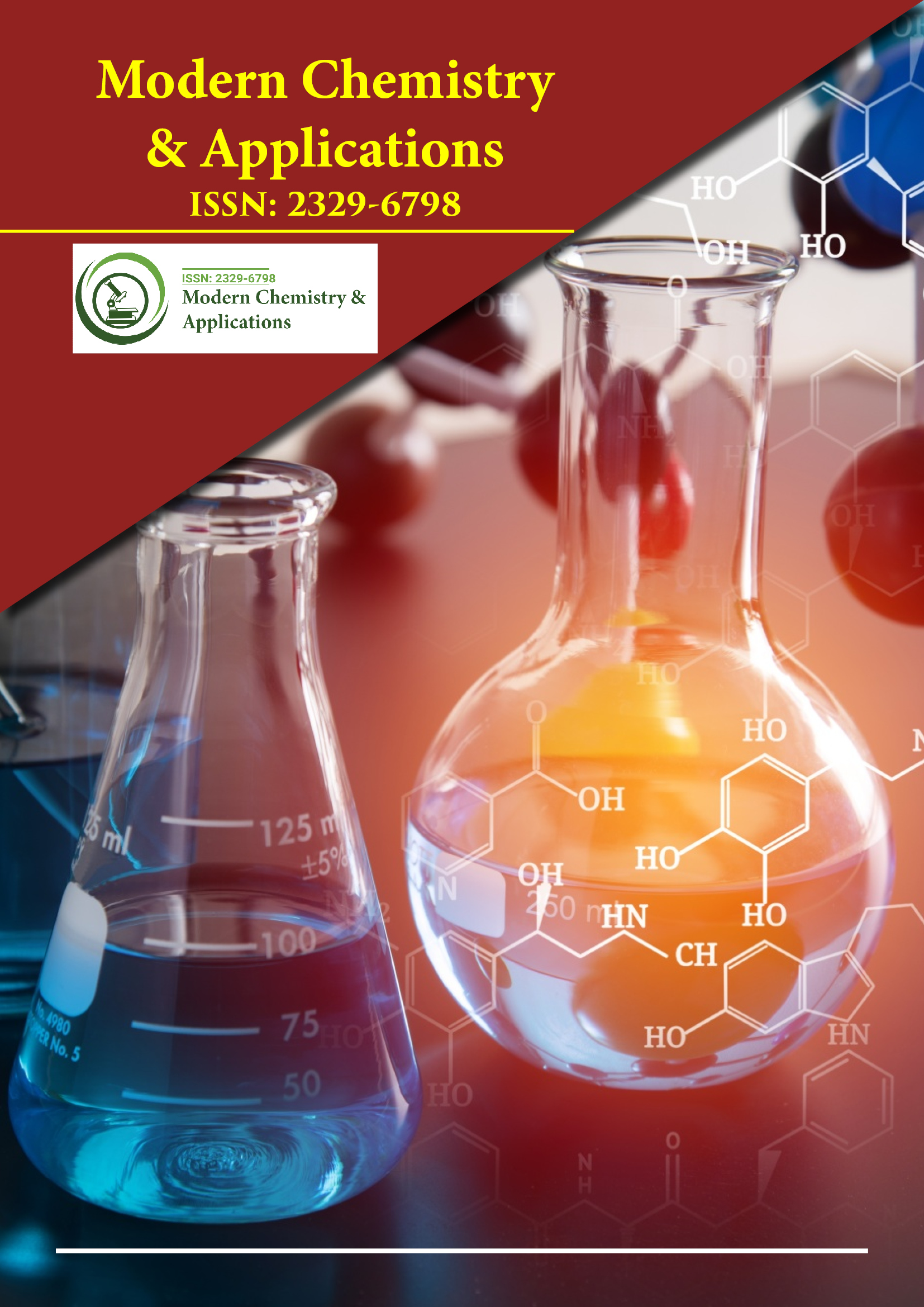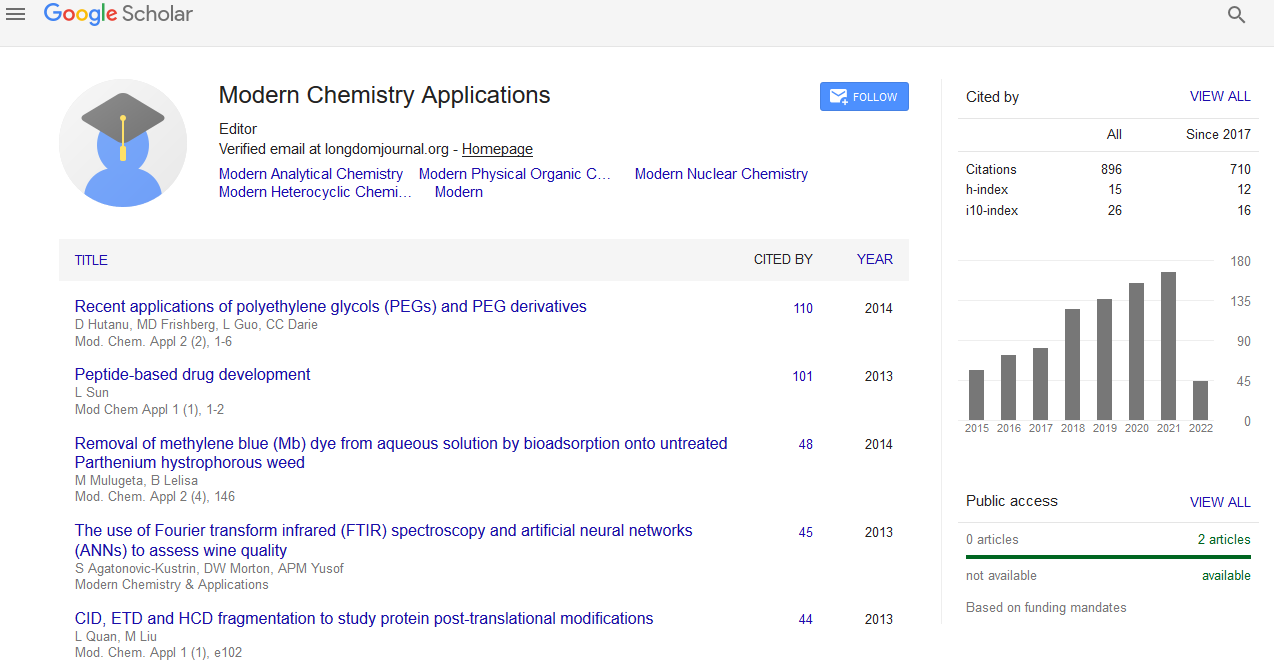Indexed In
- Open J Gate
- JournalTOCs
- RefSeek
- Hamdard University
- EBSCO A-Z
- OCLC- WorldCat
- Scholarsteer
- Publons
- Geneva Foundation for Medical Education and Research
- Google Scholar
Useful Links
Share This Page
Journal Flyer

Open Access Journals
- Agri and Aquaculture
- Biochemistry
- Bioinformatics & Systems Biology
- Business & Management
- Chemistry
- Clinical Sciences
- Engineering
- Food & Nutrition
- General Science
- Genetics & Molecular Biology
- Immunology & Microbiology
- Medical Sciences
- Neuroscience & Psychology
- Nursing & Health Care
- Pharmaceutical Sciences
Synthesis of coumarin-tagged 1,3,4 oxadiazole conjugates
5th Global Chemistry Congress
September 04-06, 2017 | London, UK
Sanjeev Dhawan, Srikanth Babu Jonnalagadda and Parvesh Singh
University of KwaZulu Natal, South Africa
Posters & Accepted Abstracts: Mod Chem Appl
Abstract:
Coumarins are an important class of heterocyclic compounds with natural and synthetic origins. It has a unique benzo- α-pyrone which has demonstrated proliferative biological activity. Similarly, the 1,3,4-oxadiazole heterocycles exhibit remarkable pharmacological and biological properties, e.g., antibacterial, anti-viral, anti-cancer, anti-coagulation and antiinflammatory activities. The 1,3,4-oxadiazole ring is highly lipophilic thus improving drug permeability across cell membranes, ensuring the drug reaches the biological target. Both classes of compounds form valuable leads in drug discovery i.e. coumarin fused 1,3,4-oxadiazole and their derivatives. Molecular hybridization techniques have been used in drug design and discovery. The method involves the combination of two or more bioactive pharmacophores to generate a single molecular scaffold with improved affinity and bioactivity, in comparison to the parent molecules. Accordingly, a series of novel 7-((5-mercapto-1,3,4- oxadiazol-2-yl)methoxy)-4,5-dimethyl-2H-chromen-2-one derivatives was synthesized. Using commercially available orcinol as the starting material, the key intermediate 7-((5-mercapto-1,3,4-oxadiazol-2-yl)methoxy)-4,5-dimethyl-2H-chromen-2- one was synthesized in four steps: condensation; esterification; hydrazidation and; cyclization; followed by alkylation and benzylation.
Biography :
Sanjeev Dhawan is a PhD candidate at University of KwaZulu-Natal, School of Physics and Chemistry, Westville, Durban, South Africa. He was awarded the NRFTWAS fellowship in 2016, to complete his PhD research in Medicinal Chemistry. He completed his B Pharmacy at Punjab Technical University, India. He completed his M Pharmacy in Medicinal Chemistry from Lovely Professional University, Punjab in 2013. He has worked as Research Associate in Jubilant Chemsys, Noida, India.


